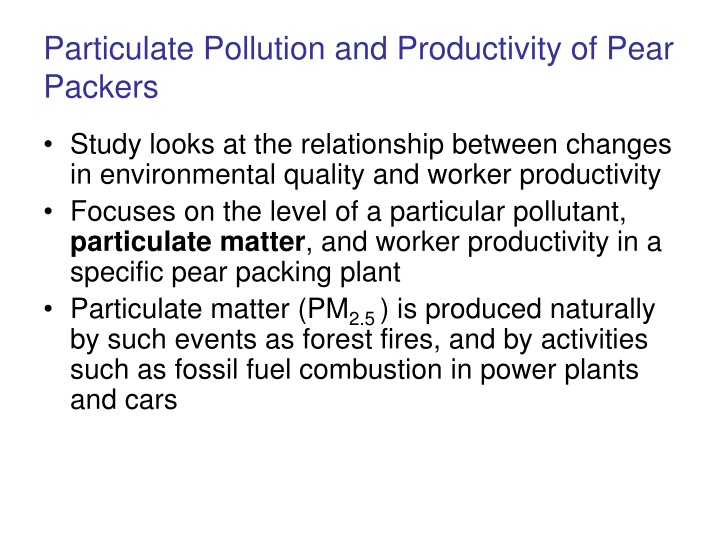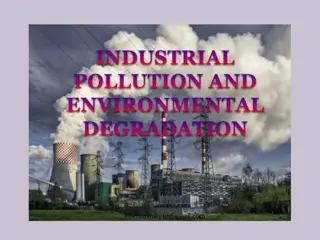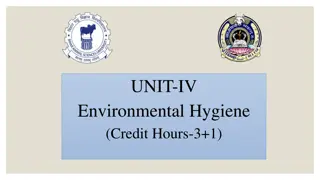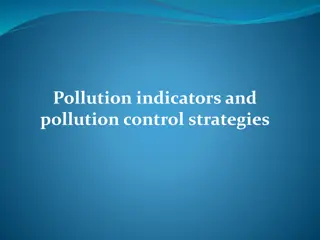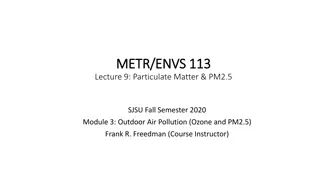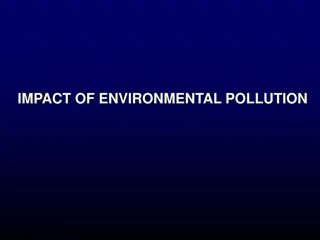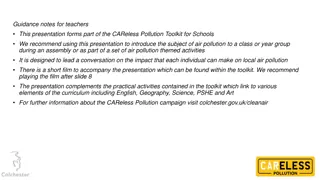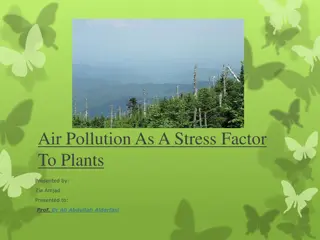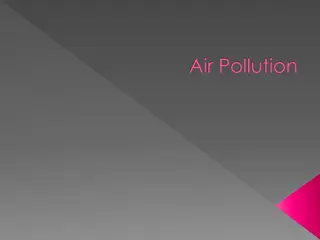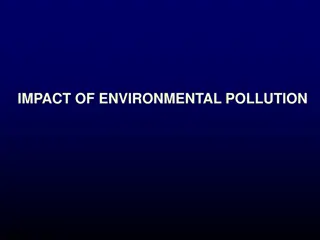Impact of Particulate Pollution on Pear Packers' Productivity
Study explores how exposure to particulate matter (PM2.5) affects worker productivity in a pear packing plant. Findings suggest a negative relationship between PM2.5 levels and productivity, potentially due to health effects such as respiratory and cardiovascular problems. The research uses linear regression to analyze the data and model the inverse relationship between PM2.5 and productivity.
Download Presentation

Please find below an Image/Link to download the presentation.
The content on the website is provided AS IS for your information and personal use only. It may not be sold, licensed, or shared on other websites without obtaining consent from the author.If you encounter any issues during the download, it is possible that the publisher has removed the file from their server.
You are allowed to download the files provided on this website for personal or commercial use, subject to the condition that they are used lawfully. All files are the property of their respective owners.
The content on the website is provided AS IS for your information and personal use only. It may not be sold, licensed, or shared on other websites without obtaining consent from the author.
E N D
Presentation Transcript
Particulate Pollution and Productivity of Pear Packers Study looks at the relationship between changes in environmental quality and worker productivity Focuses on the level of a particular pollutant, particulate matter, and worker productivity in a specific pear packing plant Particulate matter (PM2.5 ) is produced naturally by such events as forest fires, and by activities such as fossil fuel combustion in power plants and cars
Health Effects of Particulate Matter If inhaled deep into lungs, PM2.5 impairs respiratory function It can also enter the bloodstream where it can cause cardiovascular problems Exposure to high levels of particulate matter may lead to such events as heart and asthma attacks
The paper examines whether exposure to PM2.5at fairly low levels negatively affects worker productivity More generally, the paper examines whether pollution (specifically PM2.5) impairs an economy s capacity to produce goods/services The paper uses data from a pear packing firm. The firm employs people to wrap harvested pears in tissue by hand and pack them tightly in boxes.
Employee compensation was directly related to how many boxes of pears they packed per day Productivity is directly measured by observing the employees daily compensation Data on PM2.5, measured in micrograms, is taken from local air monitoring stations The pear packing takes place indoors, but unlike other pollutants, PM2.5does not dissipate indoors
Paper uses linear regression to estimate the relationship: Worker Productivity = f(environmental variables) The unit of observation is the individual worker each of whom is observed daily over a two year interval
Table 3, model 1 estimates the linear inverse relationship between PM2.5and productivity Model 3 in table 3 accounts for differences in marginal PM2.5effects by using a series of dummy variables representing different ranges of PM2.5levels
Primary results in model 1 A one unit change in PM2.5reduces predicted hourly earnings by $0.041. The relationship equals an elasticity of approximately 0.06 around the mean of the variables meaning a 10% increase in PM2.5leads to a 0.6% decrease in earnings. Relationship is unlikely to be linear. Why?
Model 3 using dummy variables imply 1. Hourly earnings are 6 cents lower on days when PM2.5 is 10-15 micrograms compared to when the PM2.5 is less than 10 micrograms 2. Hourly earnings are 53 cents lower on days when PM2.5 is 15-20 micrograms compared to when the PM2.5 is less than 10 micrograms 3. Hourly earnings are $1 lower on days when PM2.5 is 20-25 micrograms compared to when the PM2.5 is less than 10 micrograms 4. Hourly earnings are $1.85 cents lower on days when PM2.5 is greater than 25 micrograms compared to when the PM2.5 is less than 10 micrograms
Notes: The article is especially concerned with the magnitude of effects. Why? What if the workers affected by the pollutant simply don t show up on the more polluted days? Is it legitimate to use the paper s sample to say something about general effect of PM2.5 on worker productivity?
